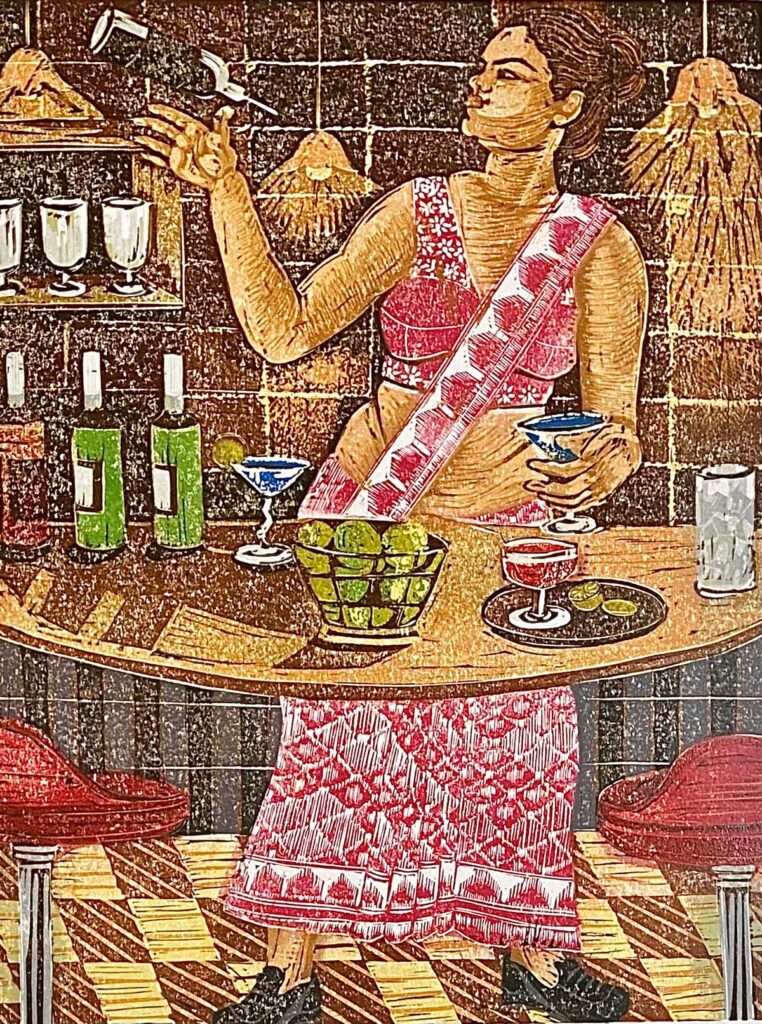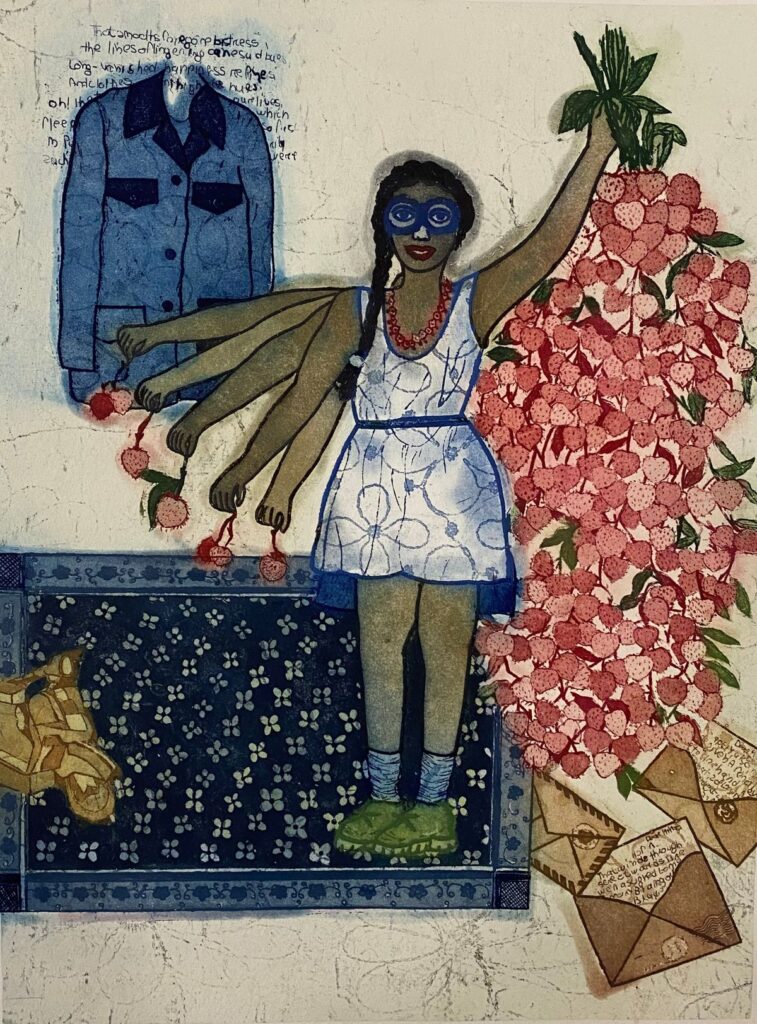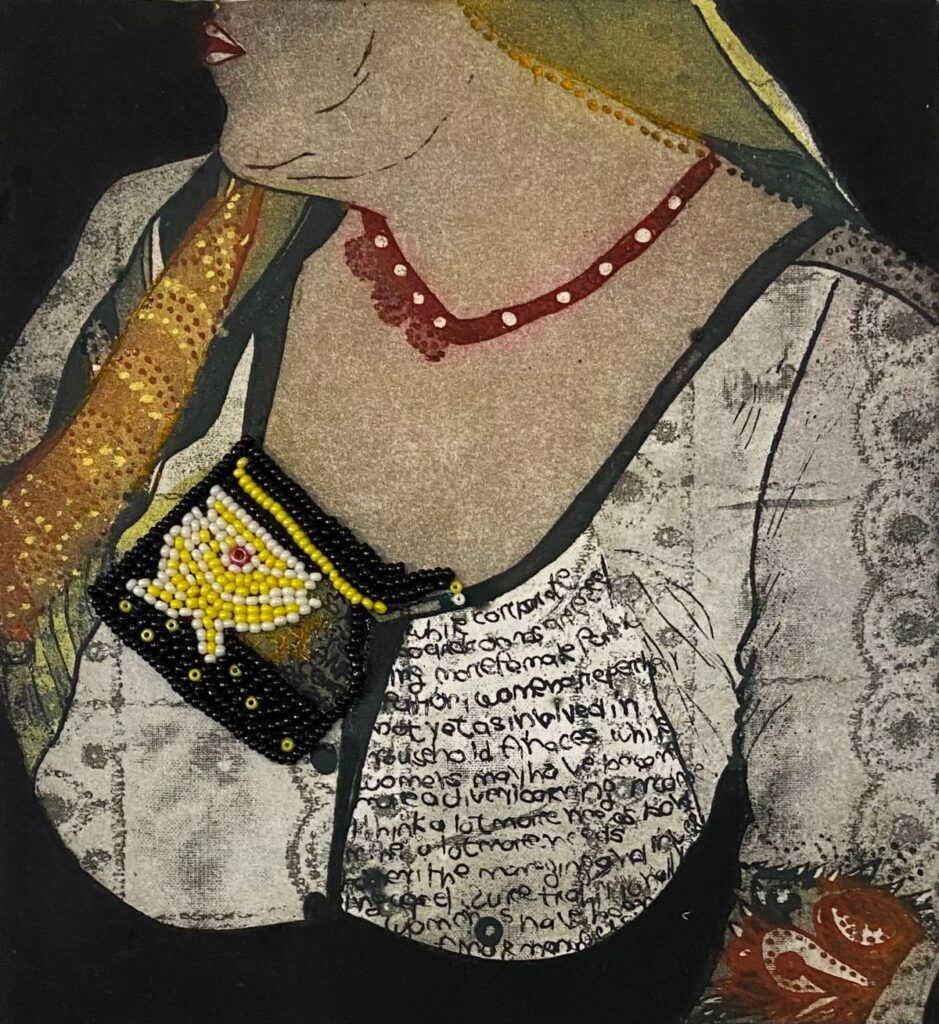By P Abigail Sadhana Rao
Etching, often hailed as one of the most esteemed and intricate printmaking techniques, has mesmerised artists and collectors alike for centuries. This captivating art form, with its harmonious blend of precision and expressive potential, continues to hold a revered place in the world of fine art. As the esteemed artist Rembrandt once said, “An etched line has a life of its own, capable of expressing the subtlest nuances of emotion and detail.” In this blog, we shall journey through the rich history of etching, delve into its various types, and uncover the nuanced techniques that have rendered it such a beloved medium. Further, we shall delve into exploring the works of contemporary artists on Mojarto, an online platform that showcases diverse creations in the realm of etching and beyond.
Origins of Etching
This printmaking technique traces its origins to the distant past. Remarkably, the Indus Valley civilisation, around the 3rd millennium BCE, utilised the art of etching to fashion exquisite etched carnelian beads. These beads, meticulously crafted through a sophisticated alkaline etching process, served as significant markers of ancient trade, linking the Indus Valley with Mesopotamia and Ancient Egypt. As time marched forward, the Middle Ages witnessed a notable expansion of etching’s historical footprint across Europe, where goldsmiths and metalworkers employed the technique to adorn armour, cups, and various other metal objects.
By the late 15th century, etching had made a pivotal transition into a printmaking medium, largely credited to the ingenuity of German printmaker Daniel Hopfer, who adapted the method to iron plates with remarkable flair. The 17th century heralded a transformative era for etching, invigorated by the pioneering contributions of artists such as Jacques Callot. Callot’s introduction of harder etching grounds and sophisticated techniques like multiple “stoppings-out” facilitated the creation of intricate details and nuanced tones, elevating the art form to new heights. This period, often dubbed the Golden Age of Etching, saw luminaries like Rembrandt and Giovanni Benedetto Castiglione pushing the medium’s boundaries with their masterful works.
By the 18th century, etching had firmly established itself as a distinguished art form, with eminent practitioners such as Piranesi and Tiepolo continuing to advance its possibilities. The 19th and early 20th centuries witnessed a fervent Etching Revival, giving rise to a plethora of talented, albeit lesser-known, artists. Today, etching endures as a vibrant and highly respected medium, celebrated for its rich historical heritage and its ability to produce exquisitely detailed and expressively nuanced works of art.
The Etching Process
Etching is a venerable and intricate technique, that involves a meticulous process where an artist coats a metal plate, typically copper, with a waxy, acid-resistant ground. Using a fine stylus, the artist scratches a detailed design into the ground, exposing the metal beneath. The plate is then submerged in an acid bath, which etches the exposed areas to varying depths, creating lines of different darkness and lightness. After cleaning the plate to remove any residual ground and acid, ink is applied to fill the etched lines, and the excess is wiped away. The inked plate is then pressed onto paper, transferring the design with remarkable richness and depth. Each step, from coating the plate to applying the final press, requires precise attention and craftsmanship, making etching a celebrated cornerstone of printmaking techniques for its ability to produce detailed and expressive prints that capture the artist’s vision with unparalleled clarity.
The Various Types
Etching encompasses a range of techniques, each endowed with distinct characteristics that shape the artistic expression on metal plates. Line etching, the fundamental form, mirrors penmanship on a wax-covered plate, where drawn lines are etched into the surface by acid, allowing for intricate and precise imagery akin to detailed drawings. Aquatint, a variant, employs granular resin to achieve tonal effects, akin to watercolour washes, enabling artists to create gradients and subtle shadings within their prints with remarkable finesse.
Soft ground etching adopts a softer, more pliable ground that can capture textures from objects like leaves or fabric pressed onto the plate. This technique produces images rich in texture and less defined than line etching, embracing a more tactile quality. Drypoint, while often distinguished from traditional etching, involves scratching directly onto the plate with a needle to create a burr that retains ink, resulting in prints characterized by a luxurious, velvety line quality.
Mezzotint, another technique within etching, begins by roughening the entire plate to hold ink, then meticulously smoothing areas to achieve gradients and deep, velvety blacks. This method is prized for its ability to render dramatic contrasts and nuanced tonal variations, making it ideal for producing striking and evocative imagery. Each technique within etching offers artists nuanced tools to convey their artistic vision with precision and depth, reflecting the rich heritage and enduring allure of this distinguished printmaking tradition.
Modern Era on Mojarto
Despite the advent of digital art and modern printing techniques, etching remains a popular medium for artists and collectors. Its handcrafted nature and the unique qualities of each print appeal to those who appreciate the tangible aspects of art. Many contemporary artists on Mojarto continue to explore and innovate within the medium, keeping the tradition of etching alive and vibrant.
Rajashree Nayak, a freelance artist, utilises printmaking and drawing to delve into the complex bond between humans and nature, focused on themes centred around women. Through her art, she captures the emotional dynamics among women and their environment, illustrating how natural elements disrupt the routine of daily life and present obstacles that influence and reshape a woman’s sense of self. This journey of overcoming obstacles ultimately empowers women, showcasing their development and growth amidst their challenges. Rajashree’s work exemplifies the role of contemporary art in challenging traditional gender roles in Indian society, offering new narratives that celebrate the strength, resilience, and individuality of women.
Rajashree Nayak’s ” Hybrids ” artwork from the recent series presents a contemporary woman in a saree meticulously crafting cocktails, an image that radiates strength, style, and elegance. This original linocut on paper celebrates the beauty and power of women, highlighting their multifaceted roles in modern society. The choice of a saree, a traditional symbol of Indian femininity, juxtaposed with the act of cocktail crafting, often associated with contemporary leisure and sophistication, underscores the dynamic versatility and grace of women. The piece eloquently emphasises how women navigate diverse spaces with confidence and poise, blending tradition with modernity seamlessly. Through this vibrant portrayal, Rajashree captures the essence of women’s empowerment, showcasing their ability to balance cultural heritage with contemporary lifestyles while exuding an effortless charm and authority.
Sonal Varshneya, a distinguished printmaker, has been passionately working with etching and aquatint on metal plates since her post-graduation, where she developed a particular emphasis on printmaking. Her fascination with etching stems from its capacity to produce strong lines and vivid textures, which form the foundation of her art. Through her work, she portrays her emotions and experiences, interweaving elements of joy and daily life. The “Vachik” series intimately mirrors her life events, resonating with deep personal significance. She candidly shares her lived experiences and the profound feelings they inspire, offering viewers an intimate glimpse into the emotional landscape of her journey. This collection stirs precious emotions, marking a pivotal chapter of self-discovery and heartfelt connections. Additionally, Sonal’s art reflects themes of feminism, capturing aspects of her identity and daily life with a distinctly personal touch.
Another notable series, “Ghar Ki Laxmi,” is an original etching adorned with hand beadwork that explores the ingenuity of women in managing finances without conventional means like pockets. The series symbolises women’s adeptness at saving and their profound love for family and tradition. Through this artwork, Sonal delves into the role of women as custodians of financial wisdom within the household, highlighting their resourcefulness and resilience. This series serves as a celebration of feminine strength and the traditional values that continue to empower women in their everyday lives. The meticulous beadwork adds a tactile dimension to the etching, enriching the visual narrative and underscoring the delicate balance between tradition and modernity that characterises Sonal’s oeuvre.
Annu Gupta, her artistic practice is multifaceted, encompassing oil and acrylic painting on canvas, as well as etching and aquatint work. Her etchings, including the thought-provoking “Web Of Life…Then & Now,” “Skyline,” are characterised by monochromatic hues and bold lines that lend a unique appeal to her work. Through her diverse range of skills and mediums, Annu captures the essence of dynamic, urban life and the intricate beauty of nature, creating a body of work that is both visually striking and rich in meaning. This artwork intricately explores the interconnectedness of the past and present, weaving together elements of the skies and urban landscapes to depict the continuity and evolution of life. Annu’s etchings are renowned for their complexity and depth, inviting viewers to reflect on the web of relationships that span across time and space.
This comprehensive exploration of etching—from its ancient origins to its modern-day practice—underscores its enduring appeal and significance in the realm of fine art. Whether as a historical testament or a contemporary pursuit, etching continues to captivate with its ability to marry technical precision with expressive depth, ensuring its timeless place in the pantheon of artistic mediums.
The Artistic Appeal
Etching offers artists a unique combination of precision and freedom. The ability to create fine lines and intricate details makes it ideal for detailed, expressive work. Moreover, the use of different etching techniques allows for a range of textures and tones, giving artists the flexibility to experiment and develop their distinctive styles.
Artists on Mojarto epitomize the myriad possibilities of etching, from its tactile textures to its capacity for conveying profound human experiences and societal reflections, ensuring its enduring status as a cherished medium in both historical and contemporary art circles. Explore our curation, Etched Narratives and related artworks on Mojarto.
Also check out Conceptual And Fantasy Style Artworks That You Shouldn’t Miss



